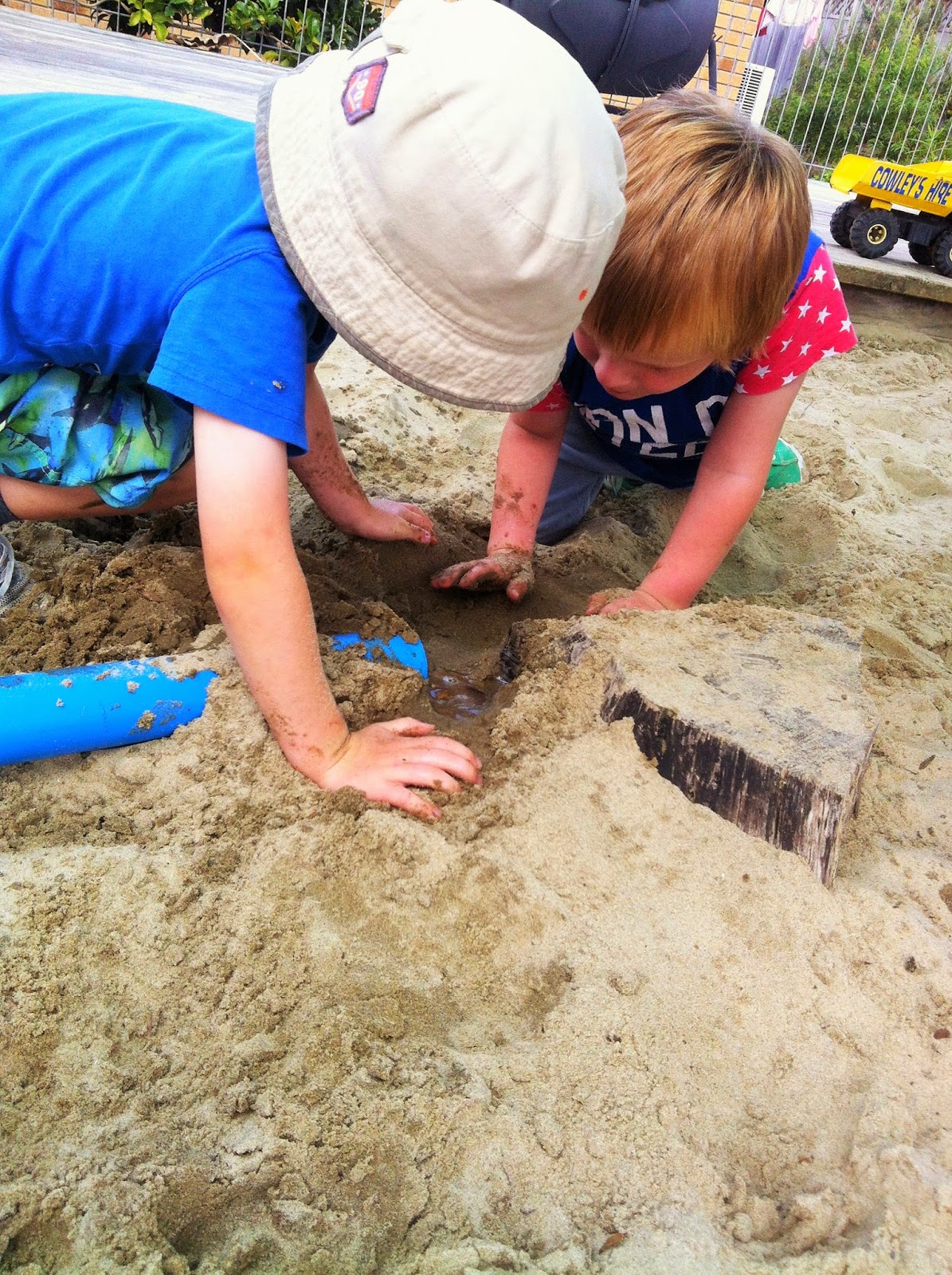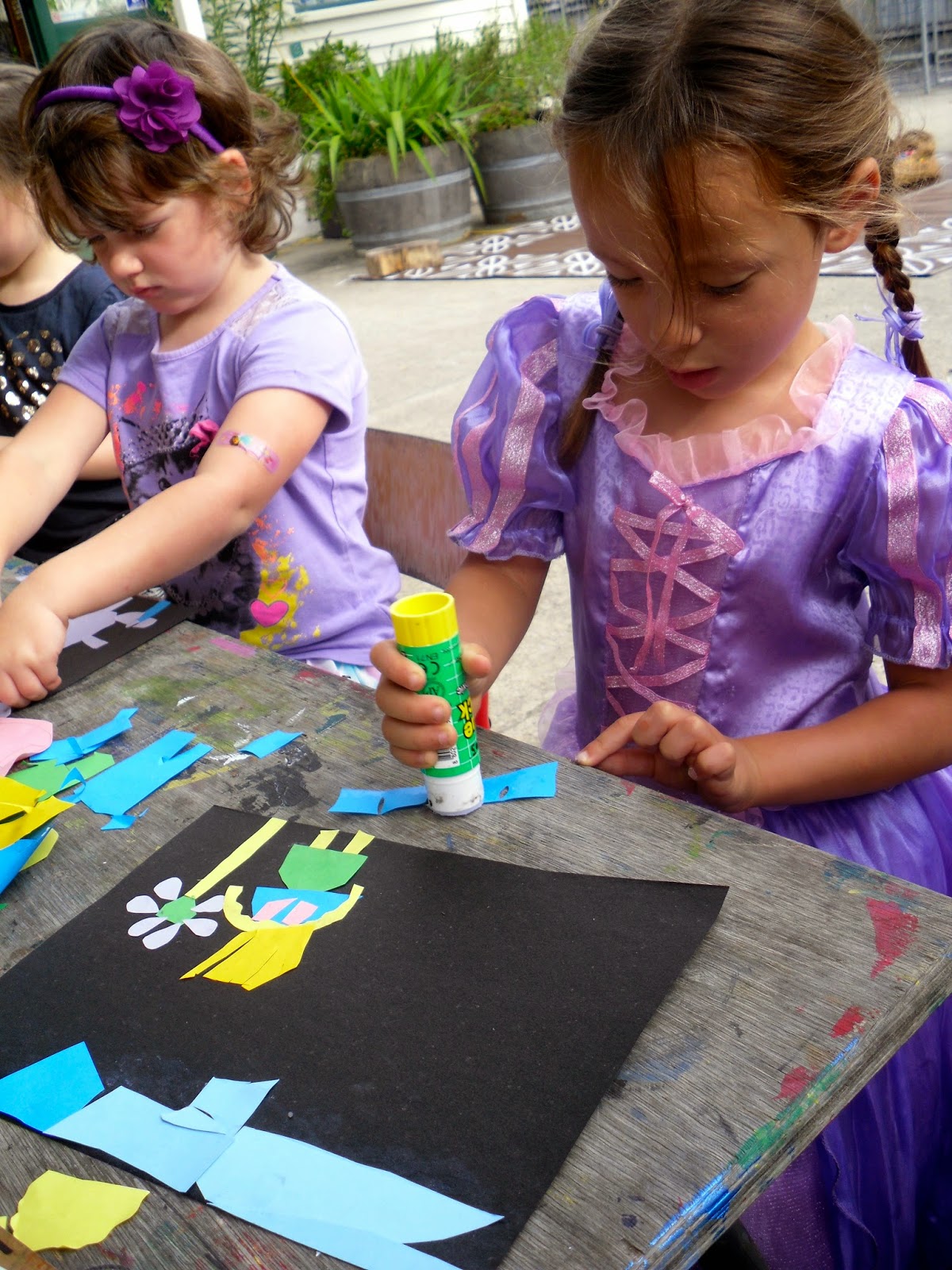Water is a very popular resource for our
children and it is highly valuable when it comes to supporting children’s
learning and development. ECE Lead recognise that “Water play is an enjoyable
and soothing activity where children can play and learn alone or alongside
others. Children can participate at any level with no expected end result or
product. Water play helps children to - Develop
hand-eye coordination and the manipulative skills of lifting, pouring and controlling - Explore the early mathematical and scientific concepts of
heavy/light, float/sink, full/empty and shallow/deep and learn about measuring,
estimating, and conservation of volume - Develop concentration and problem
solving skills as they become absorbed in their experimentation - Develop social
skills as they play alongside and communicate with others.”
Our children engage in water play on a daily
basis. Whether it is containers filled with vibrant coloured water, a water
trough set up with hoses and funnels, our wonderful river bed flowing or taps
in the sand pit with pipes and spades; it is a resource that is utilised constantly.
It often is a platform for supporting children in building relationships with
one another, opening up opportunities to share lots of dialogue and learning
about taking turns, sharing and negotiating. It allows for our children to
explore mathematical and scientific concepts, testing and playing with ideas
and just being at one with this lovely natural resource. Water play is often
open ended and transportable therefore children are able to be creative and use
their imagination to build on their play. Water celebrates exploration, with
lots of children’s senses being utilised while engaged with the resources. It
is wonderful on its own and also when it is mixed with other natural resources
like sand, dirt, flowers, leaves or bark. Time spent playing with water is
often filled with calmness, concentration and delight (unless it involves
jumping and splashing in the river bed or muddy puddles, then it is full-noise
fun!). The benefits of playing with water are rich and meaningful in terms of
children learning about their world.
"Early experiences with the natural world have
been positively linked with the development of imagination and the sense of
wonder.” (Cobb 1977, Louv 1991).
With this in
mind we are also aware that we need to make it clear to children that water
needs to be conserved. Water is nature’s most precious
resource, one that we all need to respect. As educators it is important that we
create an environment where children have opportunities to develop a real
awareness around this. Talking to the children about our role in conserving
water and its importance, as well as explaining that sometimes they will only
have a certain amount of water to use for the day are some of the methods that
we use to help lower our water consumption at kindergarten. We believe that
when children have a greater understanding and background knowledge as to why
we need to be careful with how much water we use, then they can share this
knowledge with others.
Next week we are having our annual ‘Wheels-a-thon’
fundraiser. The monies raised by this is event are going to go towards
purchasing some hand operated water pumps which are attached to half wine
barrels. These can be filled up with a certain amount of water for the day,
meaning the children will have to work hard to obtain their share. This will be
one way in which the children will have an opportunity to develop an awareness
of how this resources is precious and to be careful around how it is utilized
in their play to make it last.
We
want our children to become our kaitiaki (guardians) for our future generation,
who protect and honour our natural resources like water. The concept of
kaitiakitanga (guardianship) gives a wonderful Māori world view on the
importance of looking after our environment.
“The
long-established Māori system of environmental management is holistic. It is a
system that ensures harmony within the environment, providing a process of, as
well as preventing intrusions that cause permanent imbalances and guards
against environmental damage. Kaitiakitanga is a concept that has roots deeply
embedded in the complex code of tikanga. Kaitiakitanga is a broad notion which includes the
following ideas: guardianship, care, wise environmental management.” (Wikipedia)
I asked a group of children a few questions
like; “Where do you think water comes from? How can we look after water? What
do you like to do with water?”
“I think it comes from the tap and if we
drink too much from the tap it will run out. I turn the taps off when I’m not
using them. I just jump in puddles the rain makes in my drive way. I really
like playing with the water in the sandpit, making it go in the pipes is fun”
(Toby)
“Water comes from the rain clouds and there
is a song about it. It’s about a spider that goes up the drain and then the
rain comes in fast and washes the spider out. I save water at kindergarten, you
have to stop the tap so you don’t waste the water. I love it when it rains and
makes puddles and I jump in them so much.” (Miller)
“The water comes from the sky. It’s not good
to leave the tap running because you waste the water. I like jumping in puddles
on the grass here at kindergarten. When it rains, it mixes with the grass and
makes a big muddy as puddle.” (Taika)
“Water comes from the rain I know because I
thinked about it and I know because it was in my brain. I really like all the
coloured water in the bowls. We make lots of food there, just pretend food we
don’t eat. One day some tipped the water out and then there was no more and we
could have no more which was sad.” (Matteo)
“If we don’t have any rain we won’t have any
water. It’s important the rain you know, it makes all the water in the pipes
and taps.” (Braeden)
“I like digging in the sandpit and making a hole
that the water goes in. We fill it up and it make a pool. Sometimes the kids
jump in the pools and they splash so big. I know that we need to make sure we
turn off the taps in the sandpit so the water doesn’t run out. You know I know
that water comes from the mountains into a big lake. It then goes through a big
machine to get the sours out of it. Then we can use it and drink it.” (Peter)
“Teaching children about caring for the
natural environment provides them with a range of opportunities for rich,
hands-on learning experiences about nature and the environment, and provokes
curiosity, creativity and critical thinking skills.”
(NCAC, 2009)
(NCAC, 2009)
I look forward to the purchase of our new hand pumps and seeing how they
support our children in developing even more of an awareness the importance of
conserving this wonderful natural resource. Sustainability is an incredibly significant
concept that we need to foster, role-model, nurture and teach.
“Water permeates life on Earth…Sustainable development of water
resources refers to a holistic approach to development, conservation, and
management of water resources…Sustainability is of paramount importance for the
survival of living beings. The role of water in sustainability can be compared
to role of the heart in human body.”
(http://www.benefits-ofrecycling.com/watermovementsustainability)
(http://www.benefits-ofrecycling.com/watermovementsustainability)
Till next time,
Zair























































